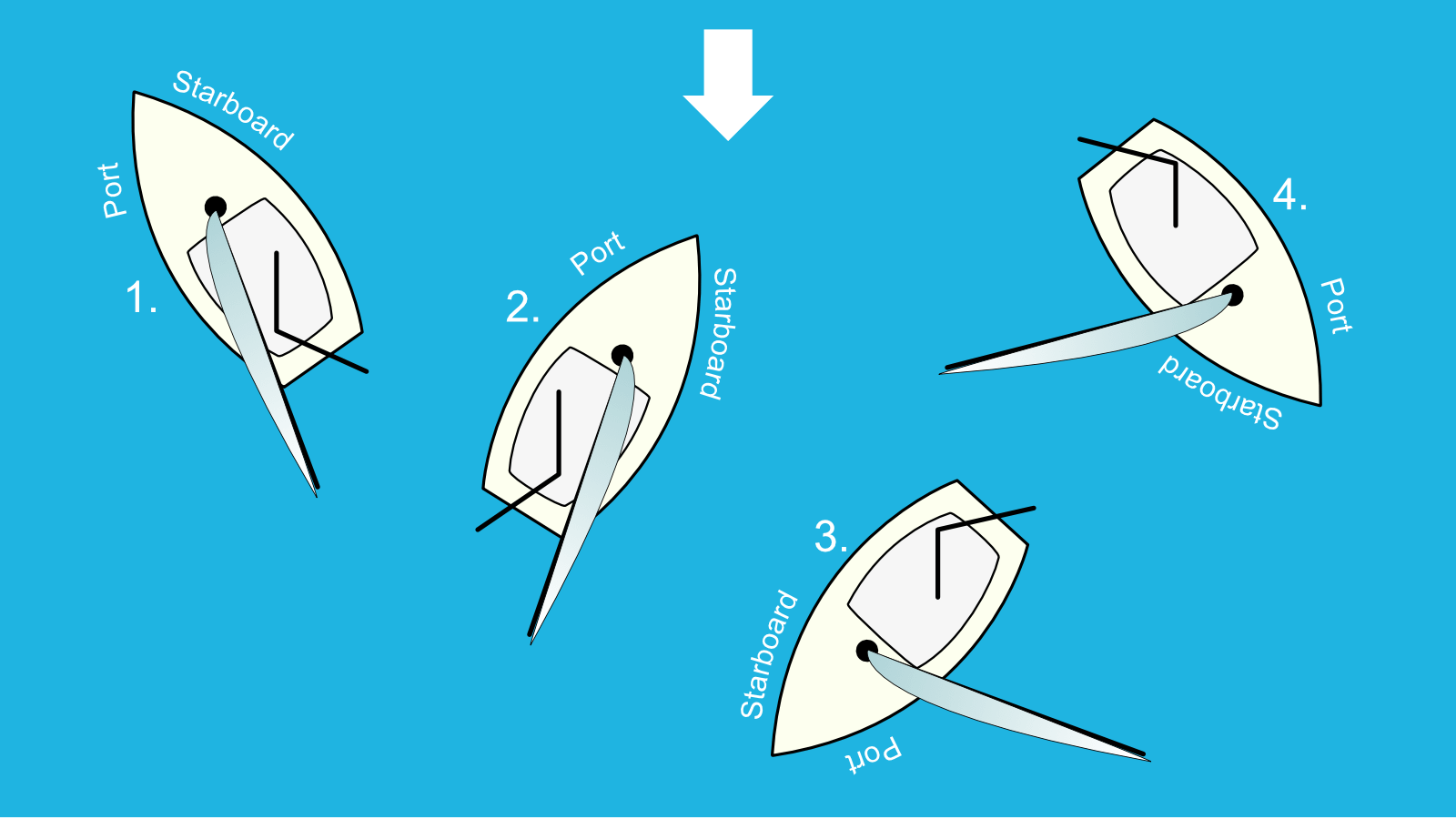Here’s a recording of what happened in the fourth Virtual Training session:
Here’s the Tacking & Gybing exercise if you want to do it yourself…

…and here it is with the answers.
Tacking and Gybing are the names used for turning the boat ‘through the wind’.
In the last session we talked about how we are always thinking about the direction the boat is going compared to the wind direction and making these moves are the biggest change we can make to the boat compared to the wind: We are starting off with the wind coming over one side of the boat, doing the turn and now the wind is coming over the other side (So the sail also moves across the boat).
Tacking and Gybing are both doing this move through the wind so what’s the difference between them? Well, Tacking is where the wind starts off blowing from one side, moves to blowing over the front of the boat and then goes to the other side. And Gybing is the opposite, so the wind blows over the back of the boat during the turn. If you need to remember which is which, think about GyBe having a ‘b’ in it for ‘Back’ of the boat – but you will get used to these fairly quickly when you are on the water as they are very different.
(In the above example, obviously the wind keeps blowing in the same direction the whole time and it’s the boat that does the turning but, when you are sat in the boat, it can feel like it’s the wind that’s moving)
Tacking
If you remember back to the first session, the way to slow the boat down is to turn it into the wind (which you might remember is called ‘Heading Up’) – To do a tack you have to start off by doing this, so tacking will always slow you down. This is why you will be taught to tack first as it’s a nice slow process to start with. in fact, you will probably get stuck ‘In irons’ (see the last session) quite a few times while learning to do it, so it will be very slow! Remember that the sail is going to come across the boat so you will have to duck under it, but it will be moving quite slowly (and flapping) so you have a good chance of avoiding the boom.
Gybing
This is a different matter entirely to tacking as, when the boat is sailing away from the wind (On a ‘run’ – see last session), it can be going quite fast and it won’t slow down during the turn. More important is that the sail will start off far out on one side of the boat then, suddenly the wind will pick it up and blow it rapidly across to the other side. You will be sat in the middle of all this so, if you don’t duck, BOOM!
One thing worth remembering is that, surprisingly, the faster the boat is travelling, the smoother the gybe will be.
The process of doing a tack or a gybe is physical and best taught in person so, while we could list the steps here, it would probably just confuse things. Just get used to thinking about which way the wind is blowing, and whether you are turning into it (tacking) or out of it (gybing) – You can practice this just stood outside. Maybe you can get an audience watching you turning round and ducking for no obvious reason – it’s up to you whether you let on why you’re doing it!